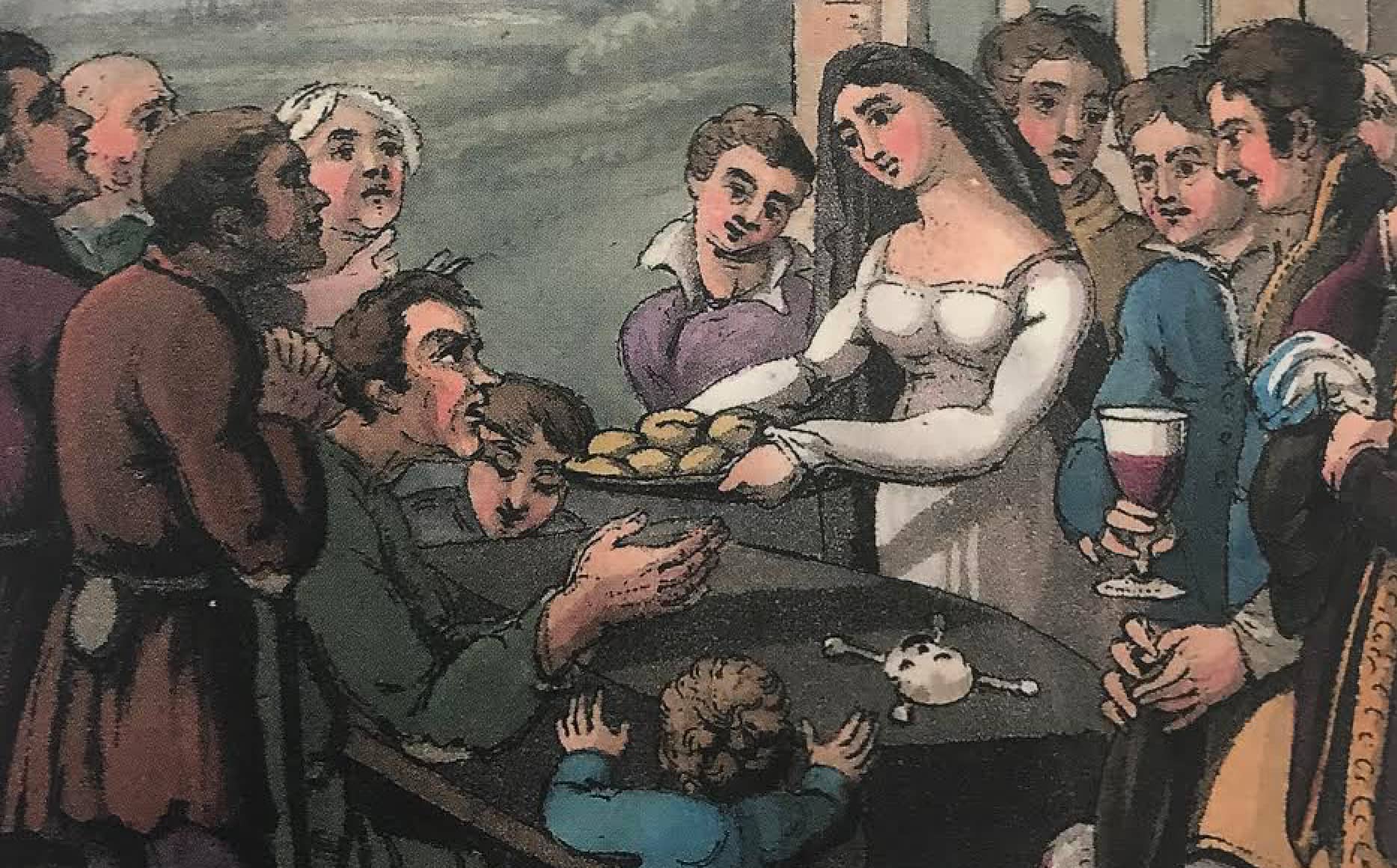A Cornwall breakfast conversation some years back led to a discussion about these people. It seems appropriate somehow to post this in a week when at least some of you are thinking of maybe doing a little less sinning (in a strictly non-religious sense of course). Even though the last but one Pope managed to be both a real Nazi and a protector of Catholic paedophiles and those sins didn’t seem to harm his career promotions any…
Fun fact for today: they used to hit ‘dead’ popes on the head three times with a special dead-pope hammer. Just to ensure they are, in fact, dead…

I’d spoken about “Respicte quia peccata populi comeditis” before.

When a family member died in parts of England, Scotland, or Wales in the 18th and 19th centuries, the family would place bread on the deceased’s chest and then call upon a paid ‘professional’ to absolve the departed of all ‘worldly transgressions.’ Not a priest, but known as the local sin eater, their job it was to eat the bread and, with it, all the misdeeds of the deceased.
This was not some abstract metaphor. The family who hired the sin eater believed that the bread literally soaked up their loved one’s sins, and so, once eaten, all the misdeeds were passed over to the hired hand. The sin eater’s soul was considered sullied with the depravities of countless men and women, and although the service was distasteful, it was also an essential step in getting loved ones to heaven. Paid redemption, if you like. Nothing changes…
The payment made for absorbing a lifetime of sin wasn’t much. For each service, the sin eater made a mere four English old pennies. Of course, those who were willing to risk their very souls — in a time when religion was still being used to (very effectively) terrify and control so many — were of course that very same poor, but perhaps they were on to something else as well: the bread and ale they were required to consume, while technically representative of sin, was still a free meal at least.
The origins of sin eating are murky, but the practice likely grew from older religious traditions or earlier pagan rituals, with some suggestion that it developed from a medieval custom: before a funeral, nobles once gave food to the poor in exchange for prayers on behalf of the deceased. Symbolic breads like the ones eaten on All Souls’ Day, which represent the dead and are eaten by the living, may also connect to sin eating.
The last known sin eater in the United Kingdom was one Richard Munslow, who took on the role after losing his three children to whooping cough. He died in 1906. Nearly 100 years later, he was commemorated with a churchyard ceremony and a proper funeral of his own.